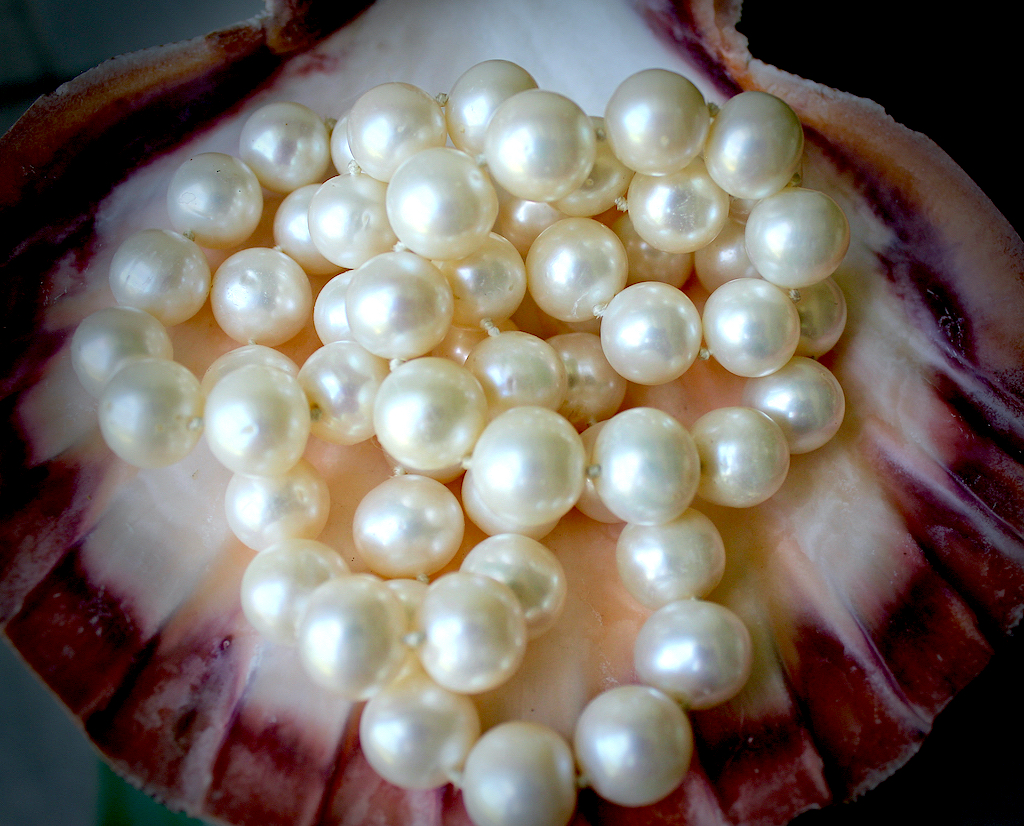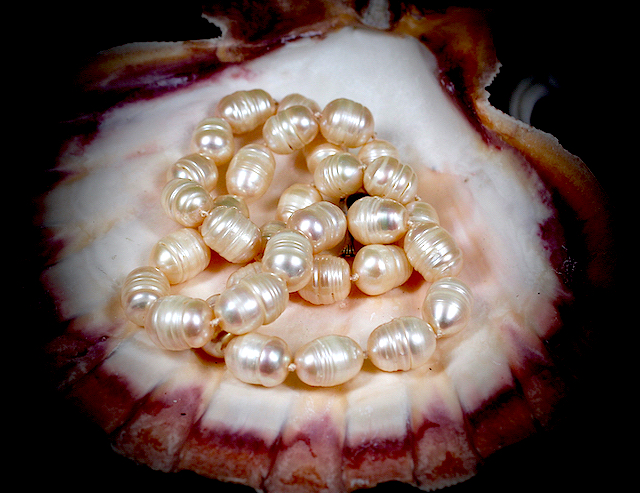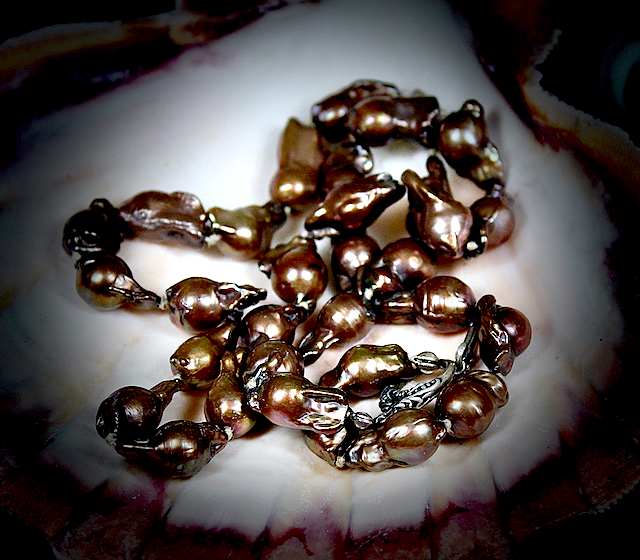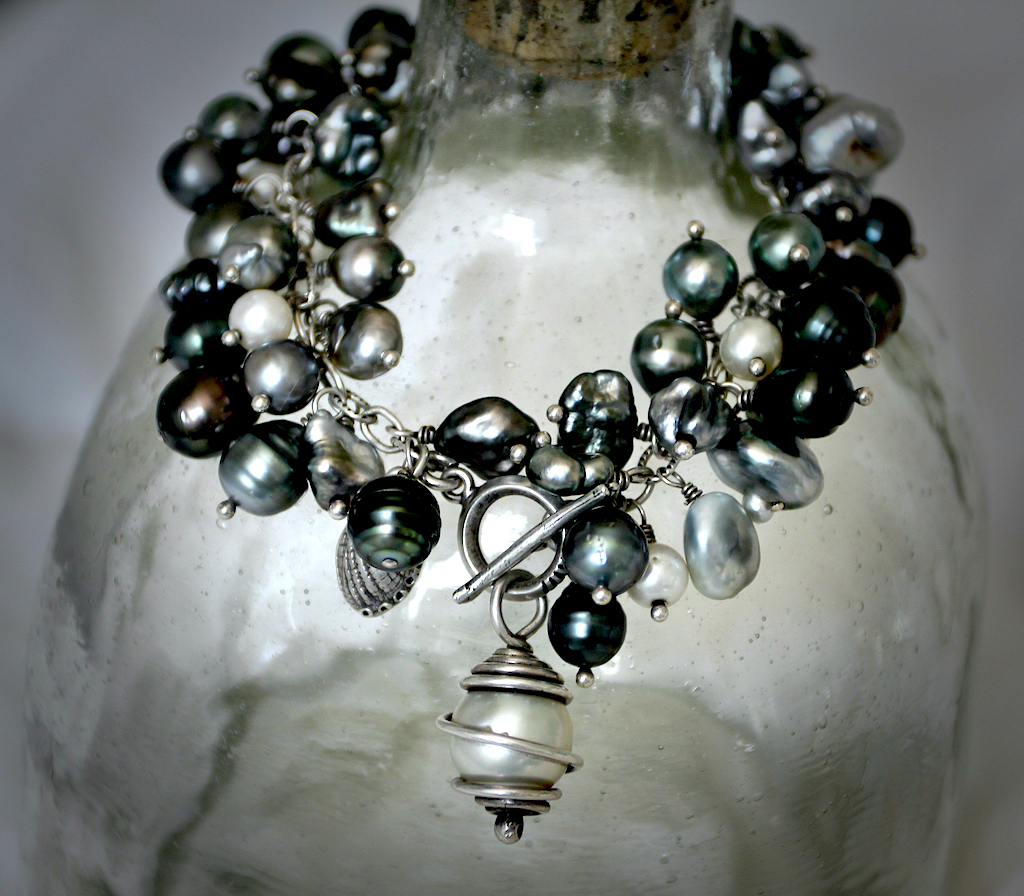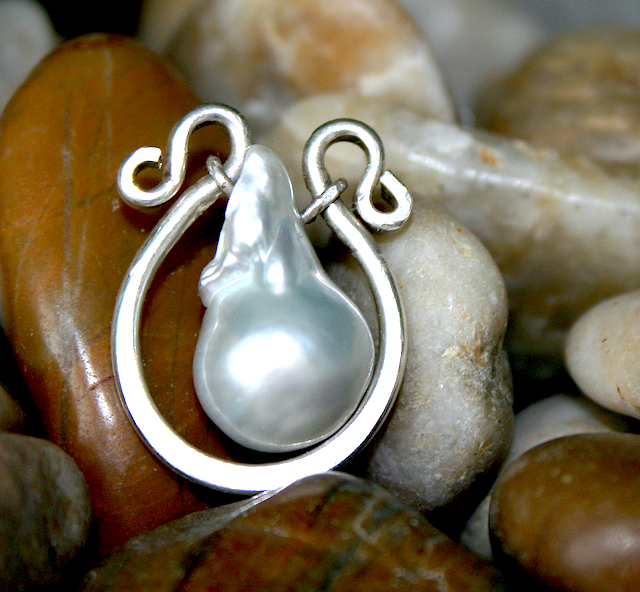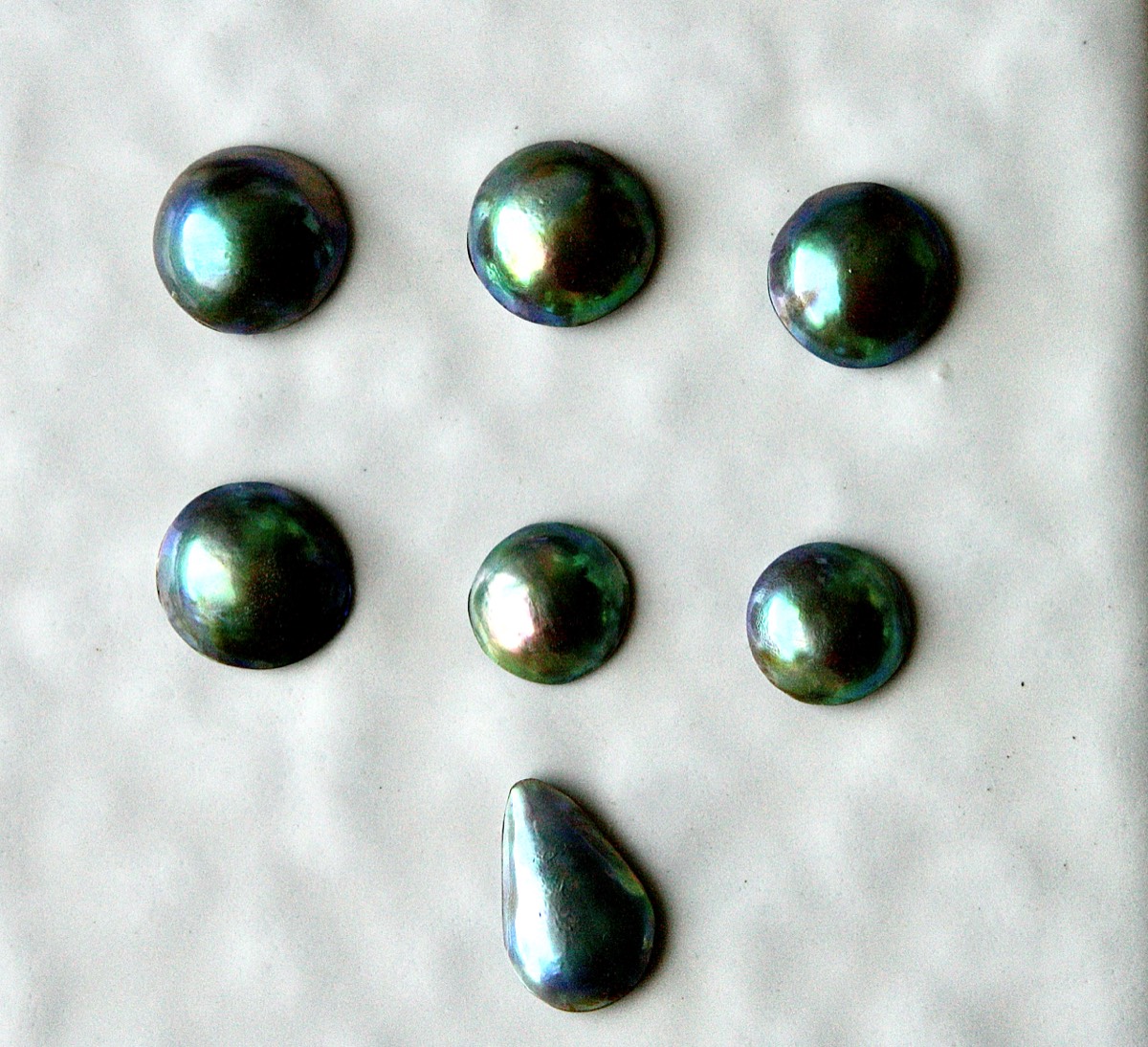Pearl Facts
Pearls are formed when an irritant (piece of sand, debris etc) enters the oyster. To protect itself, the mollusk or oyster secretes nacre to coat the irritant, thus creating a pearl. While pearls do occur naturally, Man has found a way to insert an irritant (nuclei) into the oyster, stimulating the growth of pearls. These are known as cultured pearls. Their size and shape are determined in part by the size and shape of the nuclei. They must then be left alone for several years to grow before they can be harvested. The longer they are left alone, the deeper the nacre, and better the luster! Freshwater pearls grow nacre much faster than Saltwater (Akoya) pearls which is why they are so much more expensive.
Virtually all pearls today are cultured pearls whether they are grown in freshwater or saltwater. For decades the Japanese produced the world’s finest Akoya saltwater pearls. Australia and Tahiti and now many other countries also produce "Tahitian" saltwater pearls, prized for their great size, color and luster.
Be careful when shopping for these - there is a very close imitation call South-sea Shell pearls - which look great but are not a true pearl that has grown in a shell.
Several years ago, the Chinese experimented with various freshwater shellfish to produce pearls and are now the largest producer of freshwater pearls in the world.
Once harvested, pearls are sorted and graded. Freshwater pearls natural colors are shades of white, pink and peach. Other colors have been enhanced, a technique perfected by the Chinese. Examples of enhanced colors are peacock, blue, green, purple, brown and so on. The huge variety of colors, sizes shapes and textures make them fun to work with and add an interesting design element.
For more information, please click here to go to wikipedia.
Pearls are formed when an irritant (piece of sand, debris etc) enters the oyster. To protect itself, the mollusk or oyster secretes nacre to coat the irritant, thus creating a pearl. While pearls do occur naturally, Man has found a way to insert an irritant (nuclei) into the oyster, stimulating the growth of pearls. These are known as cultured pearls. Their size and shape are determined in part by the size and shape of the nuclei. They must then be left alone for several years to grow before they can be harvested. The longer they are left alone, the deeper the nacre, and better the luster! Freshwater pearls grow nacre much faster than Saltwater (Akoya) pearls which is why they are so much more expensive.
Virtually all pearls today are cultured pearls whether they are grown in freshwater or saltwater. For decades the Japanese produced the world’s finest Akoya saltwater pearls. Australia and Tahiti and now many other countries also produce "Tahitian" saltwater pearls, prized for their great size, color and luster.
Be careful when shopping for these - there is a very close imitation call South-sea Shell pearls - which look great but are not a true pearl that has grown in a shell.
Several years ago, the Chinese experimented with various freshwater shellfish to produce pearls and are now the largest producer of freshwater pearls in the world.
Once harvested, pearls are sorted and graded. Freshwater pearls natural colors are shades of white, pink and peach. Other colors have been enhanced, a technique perfected by the Chinese. Examples of enhanced colors are peacock, blue, green, purple, brown and so on. The huge variety of colors, sizes shapes and textures make them fun to work with and add an interesting design element.
For more information, please click here to go to wikipedia.
